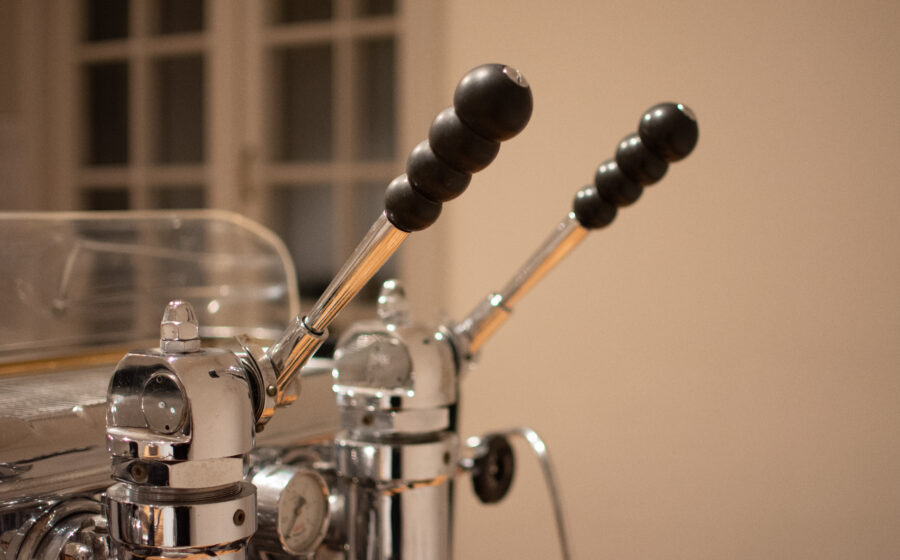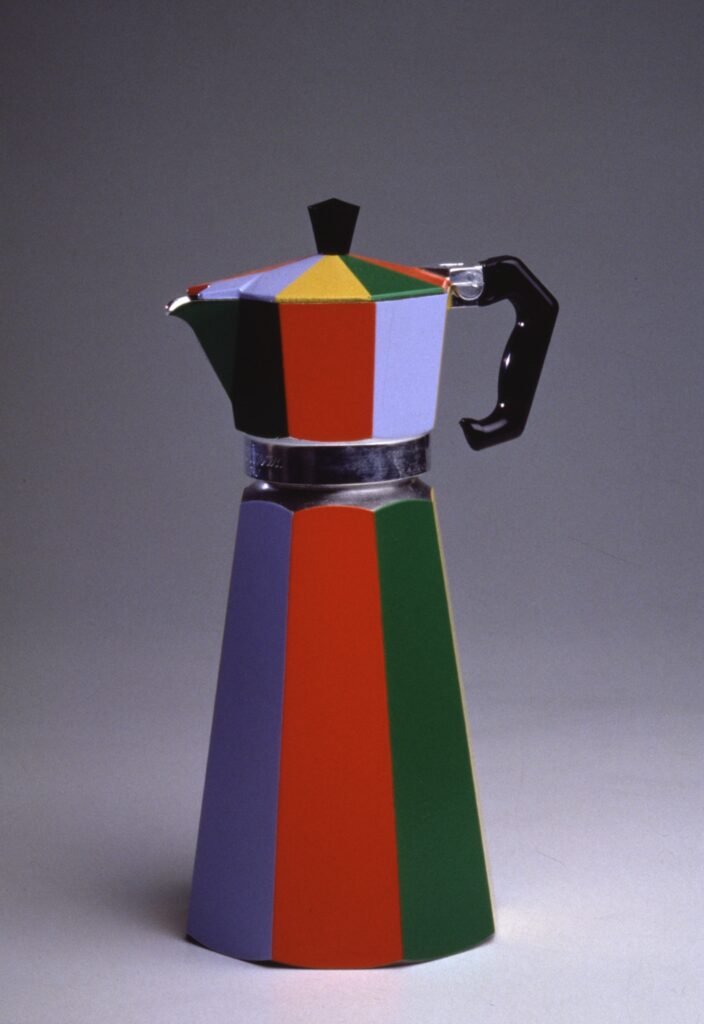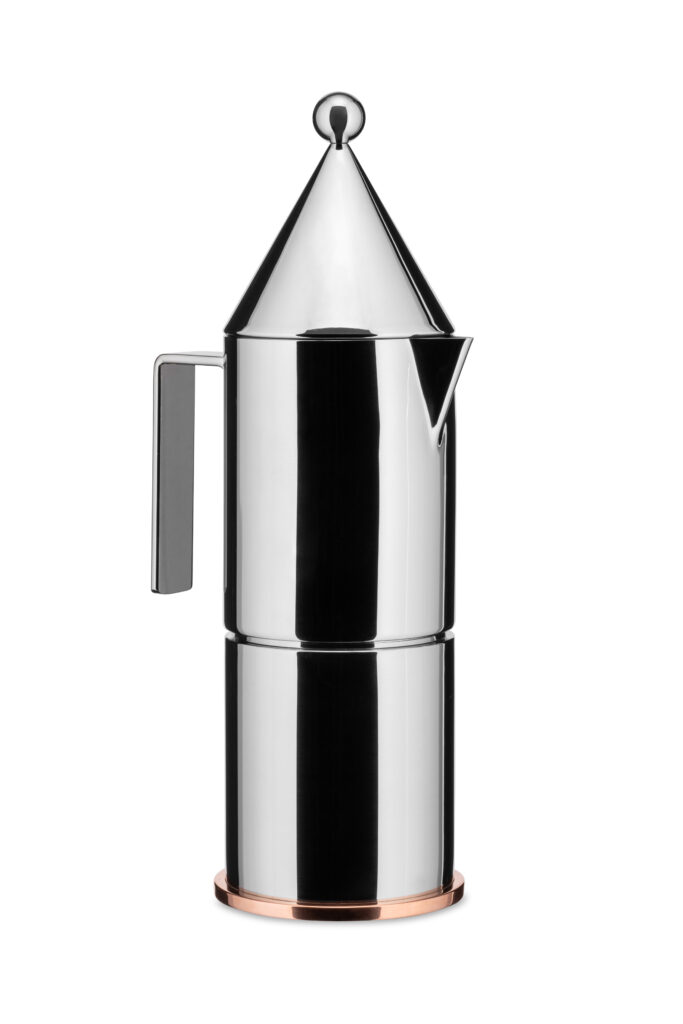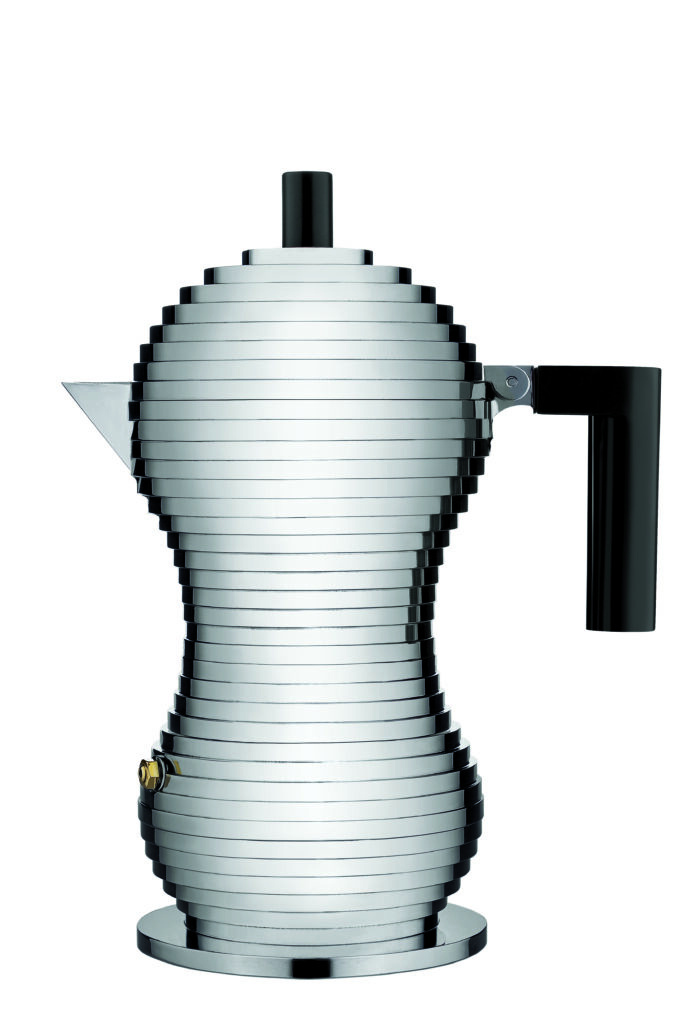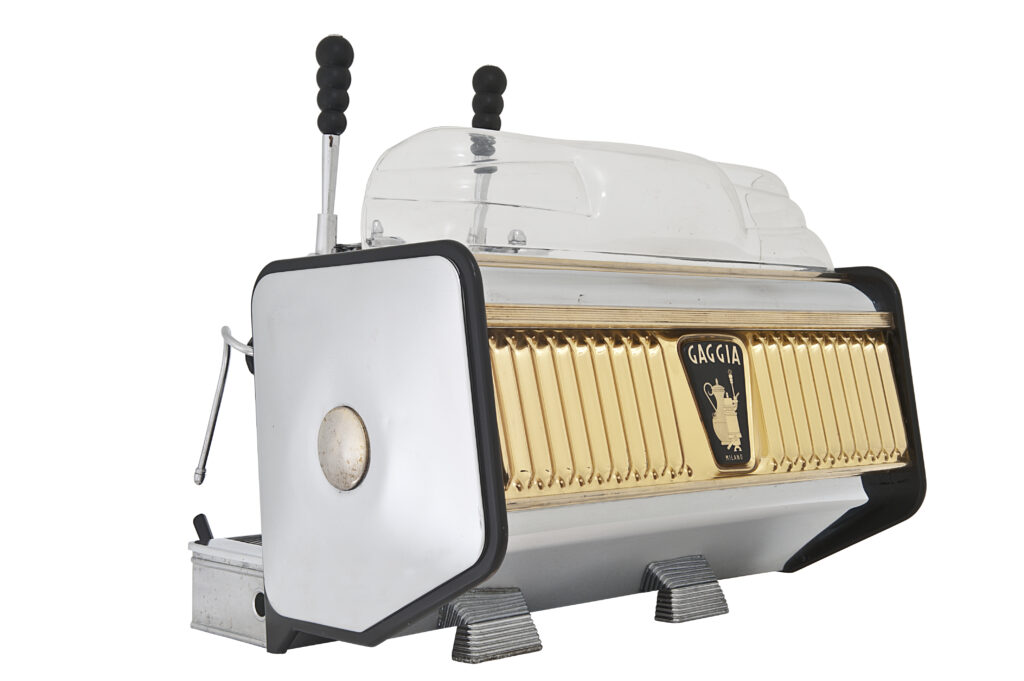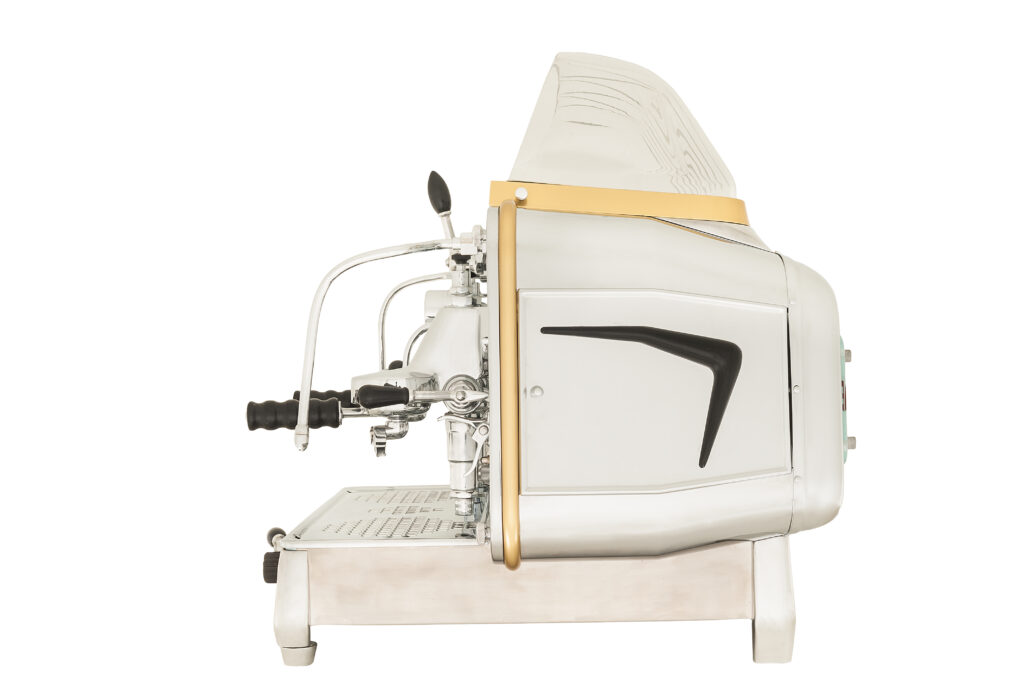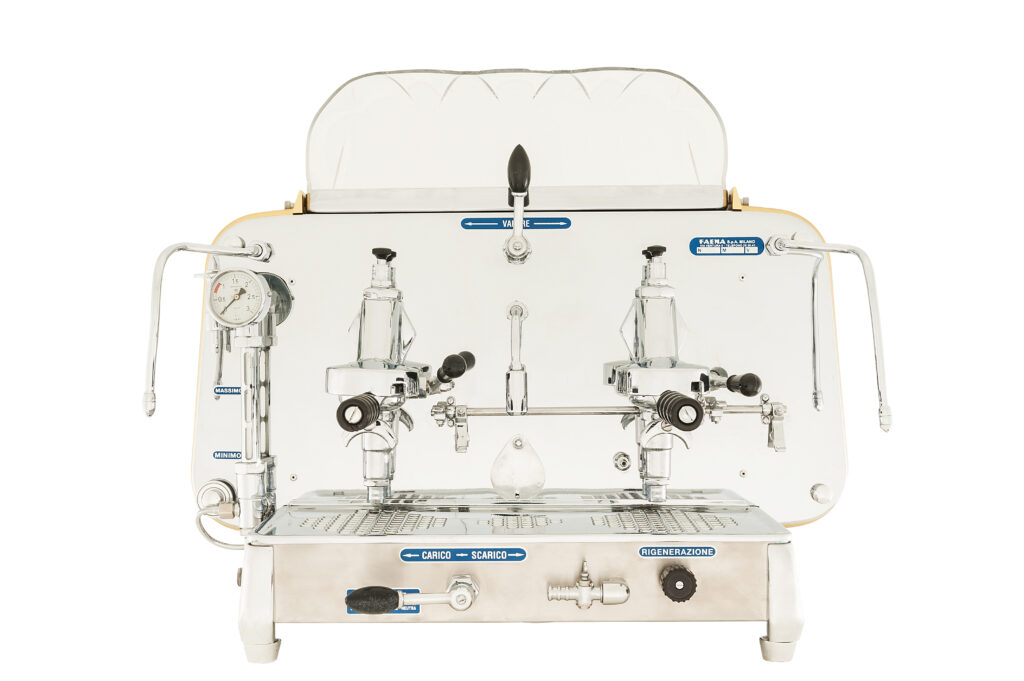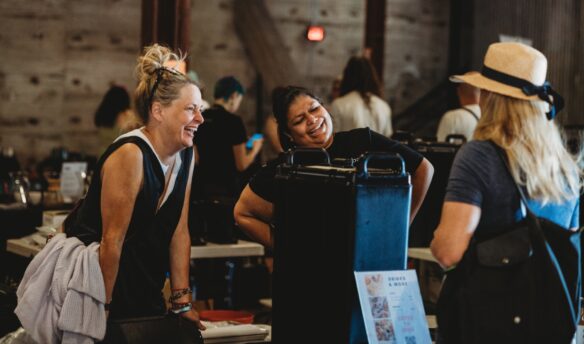Italy is perhaps the country most associated with espresso. Angelo Moriondo invented the espresso machine in the northwest city of Turin in 1884, and many well-known coffee equipment manufacturers call the city home. Modern espresso machines look very different from Moriondo’s initial design, and a new exhibit chronicles the evolution of coffee equipment called “Italian Passion: The Art of Espresso.”
The exhibit, currently on display through March 31st, 2023, is housed at the Istituto Italiano di Cultura di Copenhagen and features “45 pieces, ranging from machines for domestic use to coffee shop equipment and coffee cup sets,” a press release states. “The collection includes historical pieces, some of them unique and unobtainable, selected by Curator Elisabetta Pisu for their ability to exemplify the change of production and consumption habits over time, and provide insight into the social significance of an action that the world and the collective imagination inextricably associate to the lifestyle and rituals of our daily life.”
While we won’t be able to travel to Copenhagen to see the exhibit, we did get to see a snippet of some of the pieces being featured, including “the very first moka machine, created by Bialetti” and “artwork that blends architecture and design by Aldo Rossi, who transformed a coffee set into a square,” and other one-of-a-kind and unique pieces. The collection demonstrates how much espresso machines have changed and how coffee equipment can be a canvas for cutting-edge design choices and creative expression.
Here are the five pieces that made us reconsider buying a ticket to Denmark to see them in person:
Oggetto Banale: Caffettiera (Banal Object: Coffee Maker)
Who doesn’t want to make coffee out of this stunning moka pot? The piece was showcased at the Venice Biennale in 1980 and “overturns the typical proportions of an Italian moka pot by elongating the height of the boiler and introducing a coloured insert on each side.”
Espresso Coffee Maker, La Conica (The Conic/Laconic), Aldo Rossi
Alessi is an Italian-based design firm notable for taking standard coffee tools and giving them exciting and design-forward elements. The company has numerous pieces displayed at the exhibit—deciding which was our favorite was difficult.
Aldo Rossi was a famous Italian architect who made many coffee tools with Alessi—the first being a riff on a moka pot made in 1984. According to the curators: “La Conica presents a dry architectural structure, committed to elegance and balance, resulting from the perfect combination of the thin lines of the handle and the cylindrical, conical, and spherical shape of the coffee-pot body.”
Espresso Coffee Maker Pulcina (Hatchling), Michele De Lucchi
Ok, we couldn’t limit ourselves to one Alessi design. This moka pot was made in 2015 and combines “the technology developed by illycaffe and Alessi’s design experience.” If it reminds you of a baby bird, that’s on purpose: “Made in aluminum, it sets itself apart because of its unusual, stepped aesthetic. The spout is well pronounced, and its … V-shape, recalling the beak of a hatchling, is outlined so as to guarantee perfect pouring.”
Modello America, Gaggia, Milano, 1958
Espresso culture became globally popular around the 1950s, and Gaggia produced this machine—America—in large quantities during the latter half of the decade. “The design of this machine is characterized by an elegant, tasteful style, the result of a company strategy aimed at reducing the cost of materials and speeding up the mounting/dismantling time needed for maintenance.” People could also customize the plexiglass to further individualize their machines.
Modello E-61, Faema, Milano, 1961 (Restored Model)
The Faema E61 represents a turn in espresso technology. It is the blueprint for most modern machines—the Famea turned the water boiler on its side versus sitting vertically in the machine, and it’s why we consider nine bars of pressure the “standard” for extracting espresso today, amongst other innovations.
But where does the name come from? “Produced in 1961, the famous E61 model takes its name – ‘E’ – from the solar eclipse of 1961,” the press release reads. “This machine was the final outcome of various patents, and the result of the evolution of a series of models previously produced by Faema.”
You can check out these designs and more now through the 31st at the Istituto Italiano di Cultura di Copenhagen—admission is free.
Cover photo by Gaia Micatovich



